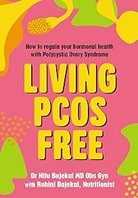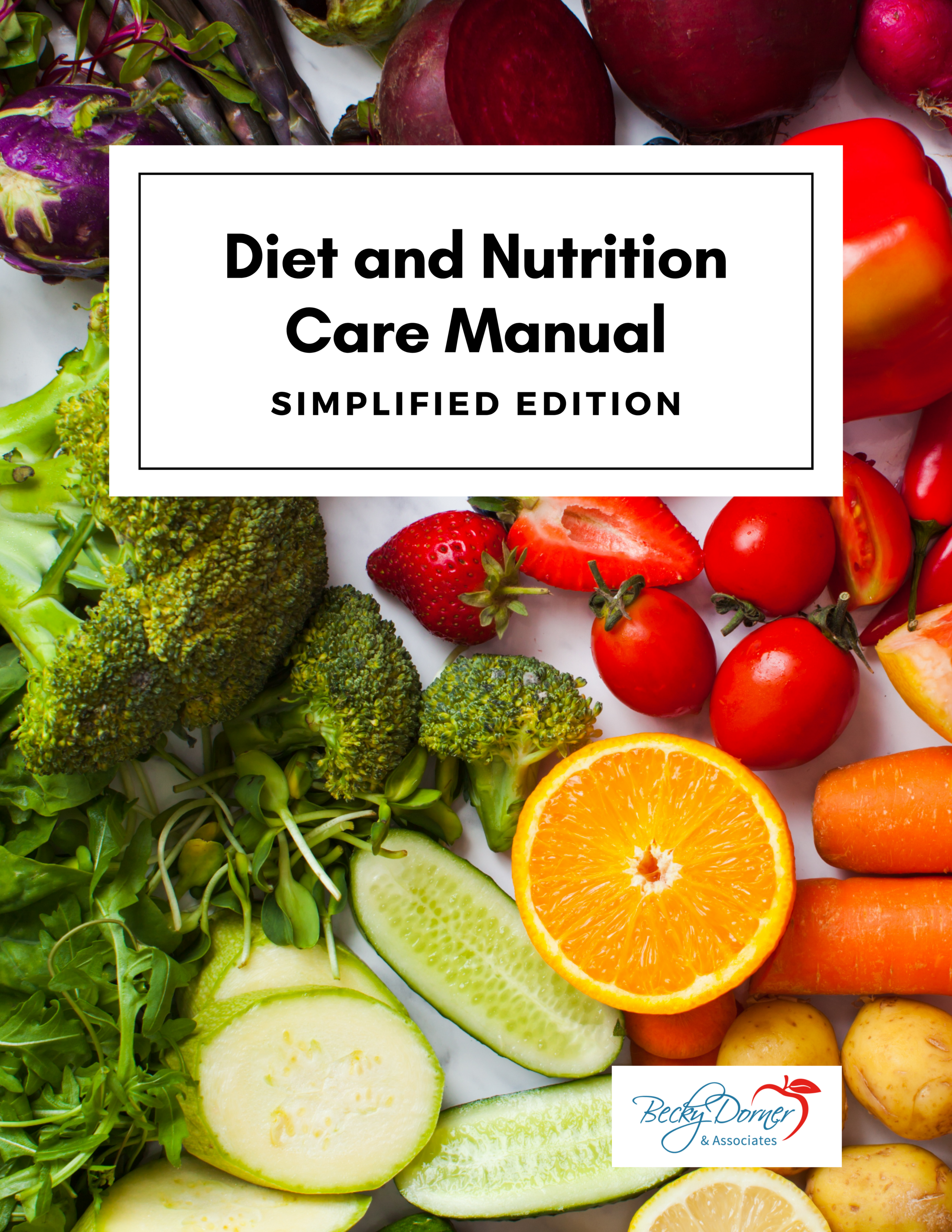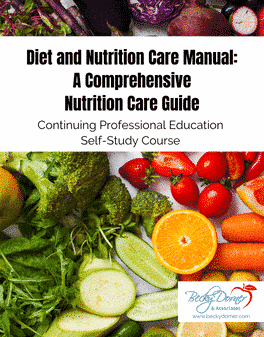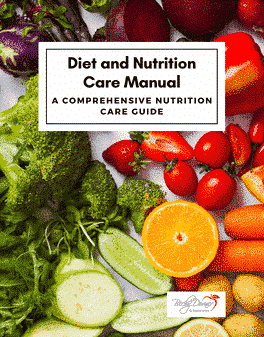
Common Questions/Answers
Fluids and Hydration
What items should be counted in a fluid restriction?
All fluids consumed are counted in millileters (mLs). 1 ounce = 30 mL, 4 ounces = 1/2 cup = 120 mL, 6 ounces = 3/4 cup = 180 mL, 8 ounce = 1 cup = 240 mL. Other items that liquefy at room temperature also need to be included such as milkshakes, ice cream, sherbet, jello, fruit ice, and popsicles. Soups, stews, fruits and vegetables (or anything else that contains liquid) should be drained prior to being served.
How do I know if a person is drinking enough fluids?
Individuals can be at risk for dehydration for a number of reasons including dementia, dysphagia, uncontrolled diabetes, medication, and/or refusal to drink fluids. Look for signs of dehydration: cracked lips, dry tongue, poor skin turgor, concentrated urine, dry skin, dry mouth, elevated body temperature, unplanned weight loss, and abnormal labs. The dietitian will assess the individual’s fluid needs and then work with the dietary manager and nursing to ensure adequate fluids are provided. The facility staff need to encourage individuals to drink the fluids provided. If you suspect that an individual is not consuming at least 6-8 (8 oz.) glasses of fluid each day, a one to three day fluid intake study (or I&O) can be completed with interventions as appropriate according to the results of the study.
What would you suggest as a way to get started implementing dehydration prevention measures? For instance, if patients are getting 8 oz milk, 6 oz. juice and coffee/cocoa, plus soup, fruit etc. from meals (probably 1500 mL) how much would you suggest increasing at fluid pass? I do have concerns that our frail, elderly patients may fill up on juice, sugar-free beverages or water. What kind of a time line would you suggest? We would like to be sure that patients are receiving water before, during and after therapies as well.
I understand your concerns about residents filling up on fluids and not eating meals. It is a difficult dilemma. Many older adults do not even realize that they are thirsty, so it is very important to spread offerings of liquids throughout the day. Just as every individual is unique, every facility is different. Facility staffing and routines vary greatly, so it is difficult to give specific suggestions for each facility. However, some general ideas may be helpful. Breakfast trays generally include 8 oz. milk, 6 oz. coffee, and 6 oz. juice. That’s 600 mL in the morning after a night long fast, and should get residents off to a good start. Lunch and Dinner meals usually provide another 4-8 oz. of milk, 6 oz. coffee, and 6-8 oz. of either water or juice at each meal. This adds another 16-22 oz. (480-660 mL) per meal, for a daily meal total of about 1560-1920 mL offered. (In addition, you may have additional fluids in the form of soups, sherbet, ice cream, etc.) This is spread nicely between the three meals. Then it is just a question of how much of this fluid is actually consumed and how much fluid you should offer between meals. Depending on timing of med-pass versus meals, you might offer extra fluids in between meals–around 10:00-10:30 AM and 2:30-3:00 PM might work nicely. If med-pass times are too close to meals, the facility might consider a “beverage cart” service at the above times. Volunteers or activity staff might assist with a beverage cart. If fluids are offered at med-pass, offer a minimum of 6-8 oz. of fluids (180-240 mL or 360-480 mL per day). And then there is HS snack, which is often offered after residents have gone to bed. For those needing additional fluids, it is wise to specify when and how they should get it (whether on the tray or in between meals). Staff training is essential to assure that staff understand the importance of hydration. For more information on a great training tool, check out our Hydration: It’s a Splash Inservice.
Heights and Weights
Do you have any strategies for motivating stFF in the LTC setting, to do monthly weights and re-weights (as appropriate), in a timely and accurate manner?
Training, educating, positive relationships and good communications are the best ways to keep staff motivated. Our Policy & Procedure Manual offers many excellent suggestions on getting accurate and timely weights. Having the support of the Director of Nursing and the Medical Director helps things go smoothly. Do you have a Weight Team meeting every week? Have you explained why getting weights are are so important? We have done inservices with fun prizes, contests between units for the fewest re-weighs, least weight lost and other things to keep staff motivated. Does staff have the forms and tools they need to get the weights? One of the most important things you can do is put systems in place to hold them accountable for doing the job correctly.
Do I need to focus more on Usual Body Weight (UBW) than Desirable Body Weight (DBW) when there is a weight loss? How do you base your UBW time frame?
If you work in long term care especially with older adults, then yes, it is better to focus on UBW than DBW for most residents. Time frame for UBW: compare current weight to UBW and weights 6 months ago, 3 months ago and 1 month ago. Use the CMS criteria for significant weight change of: 5% in 30 Days, 10% in 90 days (and 7.5 % in 90 days). There is lots more information in our Policy & Procedure Manual and Diet and Nutrition Care Manuals.
Nutrient Needs Calculations/Body Weight
When a resident who is on enteral nutrition leaves the nursing home to go to the hospital and leaves at a certain weight and then comes back at a different weight, what weight do you use to calculate calories needed from enteral nutrition? The weight before they left or the weight when they returned from hospital?
We recommend that you use the current weight (weight when they returned to your facility) to calculate their needs for the enteral feeding. Just be sure that the weight you are using was obtained by your facility nursing staff. Do not use the hospital weight as their scales may be different. If there is a significant weight change from the time they left the nursing facility to the time they return, you need to document the significant weight change and what interventions you are doing to assure that the person returns to normal weight if that is the desired result. Obviously, if the person is underweight and has lost weight, you need to be sure that you are providing adequate calories via the enteral feeding.
Pressure Ulcers/Injuries
What are the basic guidelines for nutrition intervention for pressure ulcers/injuries?
First assure that the patient is receiving adequate calories (30-35 cals/kg body weight/day) to be able to utilize the protein in the diet. Then be sure that the patient is receiving adequate protein (1.25-1.5 gms/kg body weight/day) and fluids (30 mls fluid/kg body weight/day or 1 mL per calorie consumed, plus additional fluids for incidental losses such as diarrhea, vomiting, draining wounds, heated air fluidized bed, fever, etc.). A daily multivitamin/mineral supplement should be provided if a deficiency is confirmed or suspected. If you are confident that these items are in place, and the individual is actually consuming the calories, protein and fluids needed, then consider additional investigation to see if other deficiencies exist. See our Diet and Nutrition Care Manual for additional information.
Obesity/Weight Gain
How is obesity in older adults handled in LTC?
Frail older adults in long-term care settings are susceptible to malnutrition, weight loss and dehydration due to multiple disease states, medications and treatments. LTC professionals are very prudent when it comes to addressing the obese older adult. In the case of a frail older adult, we generally do not encourage weight loss, but rather weight maintenance. Unless there is a very good reason to encourage an older person in LTC to lose weight, we do our best to avoid it. If there is a well-justified reason for the person to lose weight, the RD would need to plan a careful weight loss program with a healthy diet and gradual loss of no more than 1-2 pounds per week. This would need to be care planned, and the resident would need to be closely monitored so that the program could be adjusted as needed to promote a healthy weight loss. There are no actual regulations related to obesity in LTC, but the regulations under Nutrition, address unintentional weight loss issues. For more detailed information on obesity, refer to our Diet and Nutrition Care Manual.
Unintentional Weight Loss/Significant Weight Changes
How do we determine significant weight loss?
According to the Investigative Protocol for Unintended Weight Loss for nursing homes, suggested parameters for evaluating significance of unplanned and undesired weight loss are:
Interval Significant Loss Severe Loss
1 month 5% Greater than 5%
3 months 7.5% Greater than 7.5%
6 months 10% Greater than 10%
The following formula determines percentage of weight loss:
% of body weight loss = (usual weight – actual weight) / (usual weight) x 100
Based on analysis of relevant information, the facility identifies a clinically pertinent basis for any conclusions that a resident could not attain or maintain acceptable parameters of nutritional status.
As a dietitian at what point do you recommend the use of supplements?
We always recommend starting with food first, but if all the traditional approaches have been tried and failed (interdisciplinary team review, dining, assistance, favorite foods, fortified foods, socialization, etc.), then it is time to try supplementation. Supplementation can take many forms, from milkshakes or puddings, to 1 to 2.0 calorie per mL med-pass programs, and so on. Be sure the product chosen is one that residents will accept. Vary flavors and types of supplements to avoid flavor fatigue. Timing is also important. Studies actually show that supplements given 60 minutes prior to the meal have a positive effect on appetite. Some residents do better with smaller volumes given more frequently. In this case a med pass program using a 2.0 Calorie/mL product may work best. There are also more concentrated products available that are even higher in calories and/or protein per mL.
How can nursing and dietary most effectively work together to prevent weight loss and intervene appropriately when it occurs?
Preventing and treating weight loss has to be a team effort. I would recommend a multifaceted approach:
Education: Understanding the federal regulations, interpretive guidelines and survey protocols and sharing pertinent information with nursing and dietary staff. Do frequent inservice training with both nursing and dietary. Stress the importance of working as a team for the benefit of the residents.
Systems: Use the systems you already have in place. The MDS Roster Matrix can help you identify residents at risk (those who have already lost weight, those who are not eating well, those who have difficulty feeding themselves, etc.). Make sure you have a good weight tracking system in place, and that weights are accurate and timely. Be sure there is a good food intake monitoring system in place. Managers should “manage by walking around” at meal time–do mealrounds in the dining rooms and on the wings. Intervene, supervise and retrain staff as needed.
Communication: Have weekly meetings to discuss residents who may be at risk. A “Nutrition at Risk Committee” or “Weight Committee” that includes all pertinent members of the team should be included. Be sure that everyone on the team gets a copy of the weekly weight reports, the roster matrix, or other pertinent information. Use good communication tools–in writing, not just vocal messages. Use a communication book or other tools to assure that everyone has access to pertinent information regarding high risk residents.
Dining and Food: Maximize the dining experience by assuring that residents receive the food they like at the proper consistency; food that is served in a timely manner and is at the proper temperature. Train staff on hospitality service and customer service. Focus on making mealtime as positive as possible, offering residents as many choices as possible (where to eat, who to eat with, what to eat). Assure residents receive the assistance they need to eat the meal. Call all staff out at meal time and take a “hands on deck” approach to meals: all staff can pass trays, open packages, cut foods, pour liquids, and provide verbal cueing as needed. This frees the STNAs (CNAs) up to feed those residents who are totally dependent. Make the most of the food served by enhancing favorite foods. Add additional calories and protein to food served (create a super cereal, super soup, or power potatoes by adding margarine, half and half and other high calorie/high protein ingredients). Focus on providing food first.













Hi! Thank you so much for sharing all of this awesome info.
I’m a new RD to LTC and we just switched from weighing all residents on a weekly basis to weighing most on a monthly basis. Previously we were using changes of +/-3# to trigger reweighs when we were doing weekly, but I was wondering if new of any resources that backed-up a weight change to trigger reweighs in monthly weights. I appreciate any leads you may have!
Hi Hannah,
Take a look at the CMS State Operations Manual under the Nutrition Tag. This is where the interpretive guidance to surveyors goes into detail on unintended weight loss and percentage of weight lost over time. You can also review the MDS/RAI 3.0 Manual under section K. Our Diet and Nutrition Care Manual goes into detail, as well as our Policy & Procedure Manual. Most facilities use 5% in 30 days, 10% in 180 days, and many also use 7.5% in 90 days as the trigger for a reweigh and nutrition interventions. Hope this helps!
Becky
I have a question, what are the guidelines for a hospice patient and weight loss? Currently where I work at a long term facility we do weekly weights on residents and the management is having staff weigh hospice residents weekly also. One of my residents was 190# February 11 and now weighs 153#. The supervisor wanted us to reweigh the resident. It took two of us to stand her on the scale and then she became nauseous and had an emissions and stated she didn’t wanted to be weighed again. Do you think this is invasive? It doesn’t say in the work policy about weighing hospice patients weekly or does it say what to do if it is decreased. Also should the patient and family be aware of the facility weighing them weekly?
According to the CMS State Operations Manual Appendix PP, if a patient is receiving hospice services and weighing them causes distress, the guidance under 483.25 provides support that weight monitoring may not be indicated. Although it should be assessed on an individual basis, your management team may consider developing a policy indicating patients receiving hospice services are to be weighed on a monthly basis, unless otherwise indicated (i.e., the hospice team desires more frequent weights to monitor fluid fluctuations that could affect comfort such as causing SOB or increased edema).
If weighing a hospice patient causes distress, such as your example, it warrants documenting why a weight was not obtained. In your example, a reweight is warranted to verify a significant weight change based on your facility policy. However, if the resident/patient refuses to be reweighed (i.e. you attempt again when the resident is feeling better), document the refusal of the reweight and instead, visibly assess the resident for weight loss. You might document something like: appears to have lost weight, clothes fit loosely, any identifiable characteristics of malnutrition.
See https://www.cms.gov/Regulations-and-Guidance/Guidance/Manuals/downloads/som107ap_pp_guidelines_ltcf.pdf on page 345 of the PDF document
I am new to LTC environment. How do I define unintentional, unavoidable vs avoidable wt loss etc.? The terminology is mind boggling to me. Many residents are on diuretics, wt. fluctuate over time etc.
The CMS State Operations Manual explains this in detail starting at 483.25 F692 on page 321 of the pdf from November 22, 2017. Among the important information, it notes: “Weight loss, poor nutritional status, or dehydration should be considered avoidable unless the facility can prove it has assessed/reassessed the resident’s needs, consistently implemented related care planned interventions, monitored for effectiveness, and ensured coordination of care among the interdisciplinary team.” https://www.cms.gov/Medicare/Provider-Enrollment-and-Certification/GuidanceforLawsAndRegulations/Downloads/Appendix-PP-State-Operations-Manual.pdf
On the MDS, would you code sig weight change for >10% change between the 30-180day (like at the 3-4 month mark)? Or stick to what triggers near the 180d mark??
Start with the resident’s weight closest to 180 days ago and multiply it by 0.90 (or 90%). The resulting figure represents a 10% loss from the weight 180 days ago. If the resident’s current weight is equal to or less than the resulting figure, the resident has lost 10% or more body weight.
The key word in this interpretation is “closest”. If the 10% weight change at 3-4 months ago is the closest weight available to 6 months ago, you would indicate this as a significant weight change. If a weight 6 months ago is available, and is not a 10% change, then you would not capture a significant weight change for the 3-4 month weight.
See the CMS MDS/RAI Manual https://downloads.cms.gov/files/mds-3.0-rai-manual-v1.17.1_october_2019.pdf – The key word is “closest.” If the weight closest to the 180 day comparison is not >10%, do not code it as a weight change. If the 4 month weight is the closest weight available to 180 days ago (ie, if the resident was admitted 4 months ago, thus no 180 day comparison available), and it is >10% weight change, then it would be coded.
Pages 409-410:
This item compares the resident’s weight in the current observation period with his or her weight at two snapshots in time: • At a point closest to 30-days preceding the current weight. • At a point closest to 180-days preceding the current weight. DEFINITIONS 5% WEIGHT LOSS IN 30 DAYS Start with the resident’s weight closest to 30 days ago and multiply it by .95 (or 95%). The resulting figure represents a 5% loss from the weight 30 days ago. If the resident’s current weight is equal to or less than the resulting figure, the resident has lost more than 5% body weight. 10% WEIGHT LOSS IN 180 DAYS Start with the resident’s weight closest to 180 days ago and multiply it by .90 (or 90%). The resulting figure represents a 10% loss from the weight 180 days ago. If the resident’s current weight is equal to or less than the resulting figure, the resident has lost 10% or more body weight. CMS’s RAI Version 3.0 Manual CH 3: MDS Items [K] October 2019 Page K-5 K0300: Weight Loss (cont.) This item does not consider weight fluctuation outside of these two time points, although the resident’s weight should be monitored on a continual basis and weight loss assessed and addressed on the care plan as necessary.
What are the recommendations when a facility consistently fails to get heights/weights in time per CMS regulations? The administrator and DON are aware of this systemic problem related to “staffing shortages” or residents with “contact-precaution” (scabies/MRSA). The facility has weight policy they don’t follow it despite having multiple meetings on the importance of it. If the facility fails to get height/weights in time, I dash these out in MDS, which isn’t optimal for the facility because they lose out reimbursement from Medicare/Medicaid. As a result, I’m being asked to pull heights/weights from hospital records or the latest height/weight they have on their record even if it is years ago from their current admission. Thank you!
This is a tough one, and unfortunately a question many people struggle with. We suggest continuing to emphasize with the administrator that you cannot thoroughly assess residents without routine weights (which is a liability), running the risk of survey citations, and as you mentioned, if there are a certain number of dashes (-) on the MDS, it could potentially result in decreased reimbursement. The MDS nurse may also be able to provide further support, as they understand the importance of this issue. If residents are receiving therapy, sometimes therapists are willing to obtain weights, because they are assisting the resident in and out of bed or wheelchair.
In the meantime, continue to suggest plans on obtaining timely weights, as well as directly asking the nurse and/or nursing assistant, if appropriate. Be cautious, but open, with your documentation (ie, “current weight pending”, “consulted with nursing re: current weight”, “hospital weight used to estimate nutrient needs, as admission weight is pending”), and follow up appropriately.
Although the MDS clearly states heights are to be obtained on an annual basis, some may not view this as a priority in the bigger scheme of resident care. You may consider carrying a “soft” measuring tape and obtain heights that are due yourself – with assistance from nursing assistants, if able and if time allows (lying the resident down flat or obtaining an estimate with a wing span measurement). You might also request that a nurse or nursing assistant on light duty obtain annual heights.
So I have had this question asked multiple times but I want to see what your answer would be. Lets say CBW is 110# 3/24/21 and the last wt is 102# 3/5/21 triggering a sig wt loss of 7.2% which is in less than 30 days would you trigger this on the MDS?
Yes, you will capture this as weight loss on the MDS, based upon the following MDS RAI Section K guideline:
https://downloads.cms.gov/files/mds-3.0-rai-manual-v1.17.1_october_2019.pdf – Page 409
5% WEIGHT LOSS IN 30 DAYS – Start with the resident’s weight closest to 30 days ago and multiply it by 0.95 (or 95%). The resulting figure represents a 5% loss from the weight 30 days ago. If the resident’s current weight is equal to or less than the resulting figure, the resident has lost more than 5% body weight.
At a point closest to 30-days preceding the current weight.
I would like to know if you have or can help me find evidence based reasons / formulas for adding Na to a tube feed
I am in a new facility and there are quite a few clients on this type on diet. I am aware of how to calculate for calories/ fluids and the different types of enteral formulas but have not seen this. Thank you
To our knowledge the only reason for ordering sodium for a tube fed patient would be hyponatremia (based on a CMP). According to the ASPEN Enteral Nutrition Handbook (2nd edition, 2019), “Most enteral formulas contain low amounts of sodium. Patients with increased sodium losses require sodium replacement. Sodium chloride may be judiciously included in the flush solution. The amount of salt used is based on the sodium deficit, the volume of fluid losses, and the organ from which the fluid originated”. According to this same handbook, EN-Associated causes of hyponatremia include SIADH, hepatic, cardiac, or renal insufficiency, reduced sodium intake relative to output, and high GI output (vomiting, diarrhea). The therapeutic measures for these causes vary (some recommend fluid restriction) but providing sodium replacement is recommended for a high GI output of sodium. We hope that helps to answer your question.
How do I interpret a 3 day calorie count in long-term care?
A three-day calorie count is only as good as the data that is collected. In order for it to be accurate and complete, information needs to be collected including food item, portion size, etc. It should also include any foods and beverages that are consumed that are not on the facility menu (including food brought in by family, routine snack passes, etc). In our experience, nursing department staff in SNFs are not always able to gather the information fully enough to provide an accurate calorie count. That makes the interpretation difficult. And even if the necessary information is collected, the calorie estimates totaled by the RDN are just that – estimates.
Calorie counts are probably not much more effective than reviewing documentation on meal percentage consumed and/or making meal rounds and observing intake. That being said, some medical providers still request calorie counts. If there is a physican’s order for a calorie count, it should be carried out to the best of the facility’s ability and kept on file in the resident’s medical record.
Our Policy and Procedure Manual provides several examples of methods to record food intake that you might want to investigate.
1) If a resident refuses weight to be obtained despite multiple attempts do we have to offer arm circumference measurement as a second method? DON is indicating its regulation..
2) if a resident goes out 3 days and is readmitted doe we have to take weight on return and monitor weight another 4 weeks?
First, to my knowledge there are no regulations requiring arm circumference measurements if a patient refuses weight. However, finding a way to capture changes in weight/body mass is a good standard of care. Mid-arm circumference or waist circumference could both be used and remeasured periodically to evaluate for changes. They cannot be captured on the MDS but can be used by the facility as a guide for changes in nutritional status. I would support your DON’s suggestion and appreciate his/her attention to details that can help you practice effectively.
It is important to remember that residents have a right to refuse care and treatment, including weights. I work in NC and have had many patients over the years that have refused weights for months at a time. The MDS coordinators put dashes in the MDS and both nursing and I document refusal of weights. I have never been cited or questioned by survey teams for that practice in NC.
Second, regarding reweights and weekly weights x 4 on patients who have been out for a few days- I believe this is also a good standard of care and encourage all of the facilities I consult in to do so. It does create more work for the facility but allows better monitoring and evaluation for the dietitian, especially if they were OOF in the hospital for an acute illness or return with medication changes that could affect their appetite.
I hope that helps answer your questions.
Hi,
I would like to know what is the recommended protein for adults? Would you recommend 0.8g-1.0g/kg BW for healthy adults or would you recommend 1-1.2g/kg BW?
Additionally what is the calorie, protein & fluid range that you would recommend for overweight, obese and morbid obese adults?
Thanks!
There are many factors, including clinical judgement, which determine how to estimate nutritional needs for adults and older adults, and there are lots of opinions on the subject. The RDA for healthy adults is 0.8 g/kg/day, but in some cases an individual might need more or less. Healthy older adults likely need more, but the RDA remains at 0.8 g/kg/day.
Regarding obesity, there is not much evidence to determine the best method to use when estimating nutritional needs for this population. It is really up to you to review the published information available and determine which method you feel most comfortable with. There is more information out there than I can easily include here, so I am referring you to our comprehensive diet and nutrition care manual, which has more information on the subject.
In long term care, how do you approach estimating nutritional needs in an assessment for someone who has not been weighed in weeks/months/years (whether they are on CC, hospice or just don’t want to be weighed). Are we required to estimate nutrition needs or do you leave it blank?
Estimating nutritional needs is certainly the standard of good nutrition care, but it is not possible if you don’t have a weight to allow you to do so. Leaving a blank in a comprehensive nutrition assessment form or MDS could make it look as though you have not done your job, so you should address why you are not documenting a weight or nutritional needs. You could document in the progress note, “resident has not been weighed for several months at family’s request so am unable to estimate their nutritional needs”. It is also a good idea to mention their food/fluid intake and anything else that might support their nutritional status (NFPE signs and symptoms or end-of-life status, for example).
There are methods that can be used serially to evaluate for changes in muscle mass or weight, including abdominal circumference and calf circumference. They will not give you information to help estimate a person’s needs, but they can be an indicator of changes in nutritional status. Our Diet and Nutrition Care Manual: A Comprehensive Nutrition Care Guide outlines the methods for making several different types of these measurements.